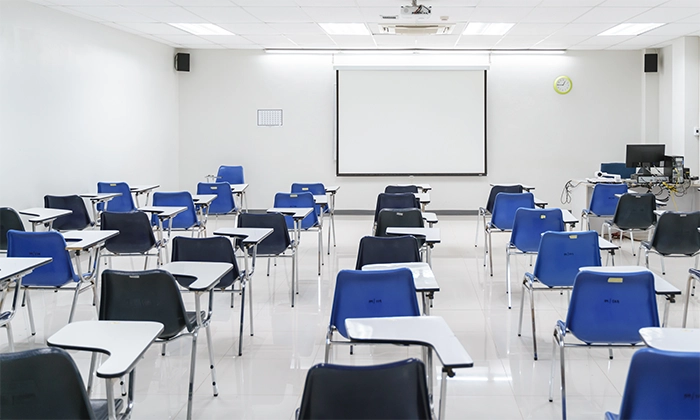The teaching and learning culture – does it all come down to money?

How do we tackle climate and culture change in our schools and lift both school performance and improve individual results?
Gonski 2.0 confirmed that since 2000, Australian student outcomes have declined in reading, Maths and Science and that the gap has widened with respect to indigenous student’s results. While the focus of Gonski 2.0 has again given light to needs-based funding, is that alone enough to remove the gaps?
The answer – No.
Gonski 2.0 outlined two clear priorities:
- Deliver one year’s growth in learning for every student, every year;
- Equip every child to be a creative, connected and an engaged learner in a rapidly changing world.
Nonetheless to see why funding is insufficient to remedy gaps, let's briefly look at each priority.
1. Deliver one year’s growth in learning for every student every year
Professor John Hattie's mantra is that young people should gain ‘a year of learning growth from a year of schooling’. His perspective is that we should move to a new model of assessment that focuses on measuring growth along a defined learning progression with an empirically determined list of sequences. A change in focus from the current meaningless standardisation which serves to only attempt to place all students in the same box would see a greater emphasis on assessment to be diagnostic and applied to cognitive and affective growth rather than standardised ranking and sorting.
2. Equip every child to be a creative, connected and an engaged learner in a rapidly changing world
Gonski 2.0 championed skill development in problem-solving, interactive and social skills, critical and creative thinking, balancing both soft 21st-century skills and traditional knowledge and understanding. In many ways, this channels the Melbourne Declaration (2009) on educational goals which disappointingly, seem to have laid dormant since.
Funding
Proper needs-based funding is essential and first and foremost we need to ensure money goes where there is the greatest need. Both Labor and the Coalition versions of the Gonski model suggested that every student should receive a base amount of funding and the allocation mechanisms for systems which operate multiple schools need to be similarly needs-based, in order to ensure all non-government school communities, with the same capacity to contribute, attract the same level of government support rather than a weighted average across their system.
We are still waiting and anyone expecting the 2018 or 2019 Federal Budgets to offer some hope or vision in that regard, would be disappointed. As NSW Secondary Principals Council (NSWSPC) president, Chris Presland, said back in May 2018, ‘(Gonski 2.0) would remain unattainable unless there was a commitment to funding being spent in the right places’.
2019 Budget – another opportunity lost
In delivering the 2019 Federal Budget, Treasurer Josh Frydenberg said education was the ‘first defence of the nation … critical to our prosperity, harmony and advancement as a country’, yet failed to deliver anything that would match his words, or for that matter the goals of the Gonski 2.0 Report which continues to sit collecting dust in Canberra.
Apart from a commendable scholarship program to support prospective tertiary and TAFE students in regional areas as well as funding to support apprenticeships in areas of skills shortage, and much needed support to increase literacy, numeracy and digital skills as well as preschool attendance among disadvantaged and indigenous students, there wasn’t any substantial education policy announcement. While there was a big spend on recurrent school funding ($300b), it really won’t amount to much across the nation, nor will it go close to bridging the gap across all schools in all sectors that Gonski revealed.
There is a little bit of ‘window dressing’ here and there (to quote The Grattan Institute’s Peter Goss) to support the government’s Local School Community Fund initiative, but $30m (approximately $200 000 per electorate) won’t build too many libraries, classrooms or fund play equipment or technology across the country and it certainly won’t do much to improve our Maths and Science results.
Without wishing to demean the importance of some of the areas to which the government did direct funds, namely theatre, music, preventative health and life education, it seemed, on one hand, a miserly amount ($20m over 4 years), and on the other, a grab at low hanging fruit at the expense of more challenging targets.
When the overwhelming narrative in education over the past few years has been our poor results in literacy and numeracy compared to other OECD countries and the lack of equality in education across the country, the failure to commit any money at all to the Gonski 2.0 findings is an opportunity lost, not only for us, but also for our future.
But it’s not all about the money
To borrow from Professor Geoff Masters AO, Gonski challenged us to redefine how we set learning expectations in schools. The heart of Gonski’s model is simply an alternative method of delivering the curriculum, something that is actually achievable for schools and not necessarily tied to funding. Instead of packaging everything into year levels, achievement levels would be mapped against proficiency in a subject. Rather than being judged only in terms of what you have learned in History by Year 8 for example, it would be mapped against set targets, irrespective of year or age level.
This is an old chestnut but one worth considering in a 21st-century approach to curriculum change seeking relevance for today’s world. Progression needs to be tied to some benchmark in order to provide for feedback, measurement and reporting and this is where it gets a little messy given the discourse for years has been about standardised assessment. While benchmarks for literacy and numeracy are well established, we are still without the same for higher-order skills, both cognitive and affective. That in itself creates a great opportunity for visionary planning.
It is not as revolutionary as it sounds; challenging yes, but not impossible. What holds us back though is schooling, not education policy, as well as the apparent lack of commitment and vision from education authorities. We have set up school structures, policies and programs which served us well in a 19th and 20th-century domain, but no longer meet the expectations and demands of the technologically driven 21st century. Done well though, it could significantly assist in the building of individual learning profiles, far more powerful for teachers and parents than NAPLAN ever dreamed of and raise our literary, science and numeracy standards.
This is where it gets both exciting and frustrating. We have some of the world’s most renowned education authorities and experts in this country and a great opportunity to think-tank what this will look like over the course of the next 25 years. Conversely though, the Federal Government’s response signals no new policy focus or long-term planning or funding for student learning, just more one-off and short-term quick fixes.
References
Subscribe to our newsletter
Get the latest teaching and learning insights delivered to your inbox.
You can unsubscribe at any time, no hard feelings.
Subscribe to our newsletter
Get the latest teaching and learning insights delivered to your inbox.
You can unsubscribe at any time, no hard feelings.
What's Atomi?
Easy to understand, super engaging, and matching what you’re learning in class. Available for 100s of subjects across your high school years.
With heaps of questions and smart AI feedback that shows you what you’ve nailed and what to work on—so you won’t just feel ready, you’ll be ready.
Improve your study game, get AI-driven tips tailored to you, keep tabs on your progress and unlock insights so you can always hit your goals.
What's Atomi?
Captivating and impactful video-first content, fit for all types of learners and grounded in the absolute must-have info of the high school curriculum.
Active recall quizzes, topic tests and exam practice enable students to get immediate feedback and build skills, while allowing teachers to differentiate instruction.
Create engaging learning experiences with easy-to-use tasks, get actionable insights to differentiate instruction and experience intelligent personalisation for your students.
What's Atomi?
Short, curriculum-specific videos and interactive content that’s easy to understand and backed by the latest research.
Active recall quizzes and practice sessions enable students to build their skills, put knowledge into practice and get feedback.
Our AI understands each student's progress and makes intelligent recommendations based on their strengths and weaknesses.




